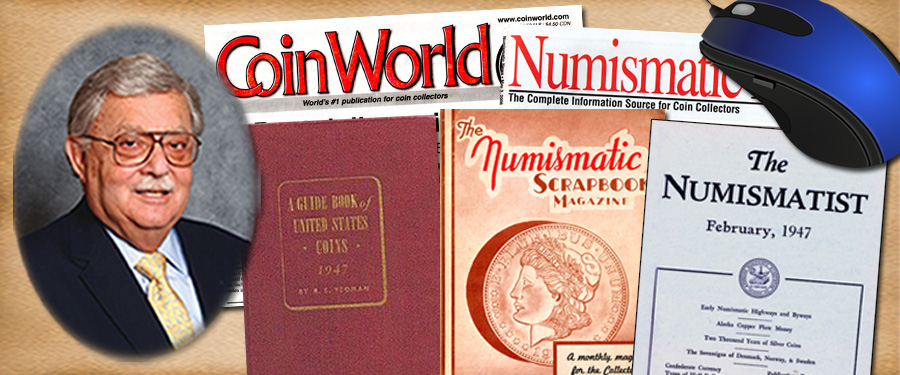
In Part 1 of this story, I discussed the various printed information sources that influenced my nearly 70 years as a professional numismatist.
As the hobby grew in the years from about 1980 to the present, the quantity of printed numismatic material grew. As more people became interested in coin collecting several new publications became available such as Coins Magazine, the Coin Dealer Newsletter, and many more. More dealers entered the field and more pricelists became available for reference. Also, there were more public auctions and therefore more prices realized were available. Information came from the newly formed grading companies in the form of population reports.
The next big change, of course, was the advent of the Internet. As early as the 1990s, the shift began toward online marketing and sales, as well as the spread of information via electronic media. Over the next two decades this trend only increased and even the popular weekly publications started to lose circulation. With so much information available on the Internet, fewer people felt the need to hold a printed publication in their hands.
Coin sales, once done mostly in person or by mail or phone, became “easier” over the Internet. Buying and selling could be accomplished instantly, and even payment could be happen immediately. Public auctions were affected, as many auction houses put their sales online as well as in printed catalogs. Bidding by mail became much less popular as collectors could bid directly online, without relying on the postal service. This process was much faster and the Internet offered the ability to track and increase bids without even the “inconvenience” of a phone call. In time, bidding in “real time” over the Internet changed the public auction scene completely, as personal attendance became less important as one could even watch and listen to the auction while bidding from home.
These changes affected how an auction company advertised and marketed. With sales available online, printed auction catalogs are sent to fewer and fewer people. This caused more and more people to access auctions only over the Internet. Some auctions are completely web-only, with no printed catalog whatsoever. The demand for printed material became less, as many people coming into the hobby had never experienced that side of numismatics.
Circulation for coin publications dropped, as people searched for the information they needed online. Advertising in the weekly and monthly publications started to drop along the circulation numbers and some publications went out of business. Those publications that survived have needed to adapt to the current situation and offer online publications to meet the needs of a new generation.
Business became dependent on electronics and each company had to figure out how to use the Internet effectively while still appealing to clients who relied on printed material. At this point, the hobby seems to be straddling both worlds. But as we move forward, I can see why David Harper predicted that his publications and others might not exist by the year 2040.
I have some opinions on the effect the Internet has had on our hobby. Having been in the business for well over half a century, I believe my observations may have some value. While the Internet has been very beneficial in many ways, I can’t help but think of some ways that it has changed numismatics in not so positive ways.
Next week I will talk a little about why I hope we are not seeing the end of the “print culture” in coin collecting.





